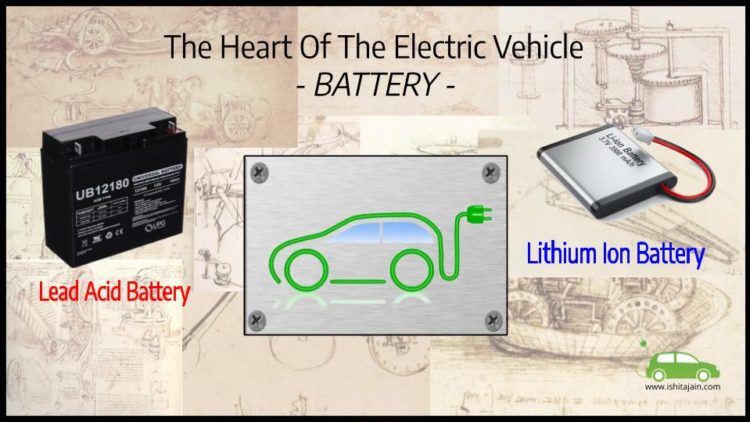Electric Vehicle Series (Part 4)
According to the WHO, 4.6 million people die every year due to air pollution. If we want to be eco-friendly and decrease the number of deaths due to this cause, then ICE (Internal Combustion Engine), in short the gasoline run cars are definitely not the way to go. As discussed in the previous article, a commendable replacement for that would be the electric car. With all of their benefits for the planet, EVs seem like a great deal. However, if we take a closer look, then a few minor discrepancies can be found that could lead up to some disasters in the future.
It all comes down to the heart of the electric vehicle – the battery, the part from where the energy is drawn from. When electric batteries run out of charge, disposal will be necessary. If they are just casually tossed aside, they could end up in landfills, polluting oceans and would just cause more suffering. But what if these batteries could be preserved? Or what if we could find different uses for them when they are deemed unworthy for cars? The main focus of this article is to analyze the components in these batteries, so that a way to recycle or strengthen them can be found.
To reach a viable solution, we need to know what exactly a battery is? Batteries are compact and conductive energy storages that power almost all devices. You’ll find them in your computer, phone, alarm clock, watch, etc. There are two types of batteries, rechargeable batteries and non-rechargeable batteries. If you take a look at a watch and alarm clock, you’ll see that you usually can’t charge the battery, so you have to replace it. With phones and computers, the batteries that are used are rechargeable batteries, which is why we plug these devices into power outlets. Different types of batteries vary in size depending on the object they need to power. For example, the batteries in a watch are miniscule while the one used in an electric car is quite huge. Having understood what exactly batteries are will help us to better comprehend their different parts and why they are needed. We can now move on to the main bulk of the battery, and what is it composed of.
For a very long time, EV batteries were made up of lead acid, a material that is non-recyclable and very harmful to the environment. Lead acid batteries are made up of two components – sulfuric acid (a compound) and lead (an element). Both of these pure substances pollute land and water. However, recently lead acid batteries are being used less and less when it comes to powering electric cars. Instead, lithium ion batteries are on the rise. They’re the same types of batteries that are found in cell phones and laptops, except the versions adapted for EVs are much bigger, and with a lot more parts. They are 3 times lighter, powerful and long-living in comparison to lead acid batteries. The only reason why lead acid batteries are still being used in some EVs is because they are much cheaper in comparison to their lithium ion counterparts, as their components are difficult to come across. Now, let’s take a look at some of the more intricate battery parts and learn how exactly they allow these energy storages to function.
The spotlight is going to be on anodes, cathodes and electrolytes, the parts of the battery responsible for energy flow. The anodes and cathodes are the terminals of the battery, the entrance and exit respectively for the energy. Electrons are energy particles with a negative charge. The process of energy within a battery works like this: when batteries are being charged, then electrons are exiting the battery through the cathode (giving it a positive charge), and when the energy is being depleted in a battery, then the electrons are coming in through the anode (giving it a negative charge). The electrolyte is the thing that connects the anode and cathode and allows energy to pass through them. The electrolyte is typically a liquid solvent (like water, alcohol, ammonia, nail polish remover, etc.) mixed with something reactive (like salt, acid or alkaline) so that it becomes a conductor. Different battery cathodes and anodes are made up of different things. In most cases, they are made out of graphite. However, in other cases they are made up of 10% Cobalt, 10% Manganese and 80% Nickel, forming a homogeneous mixture. Both of these are conductors, which helps the electricity flow through them. These battery ‘plugs’ are extremely important for the battery to work; after all, they dictate the amount of energy batteries can hold.
The entire concept of charging EVs brings up an important question. If EV batteries are rechargeable, then what do I mean when I mention the potential disaster when they run out of charge? As you use a battery more and more, its charge capacity starts to lower. Soon it can’t hold very much charge, and it essentially becomes useless. This is especially true in the case of EVs, since they are complex machines and nobody wants to be stuck in the middle of the road with a dead battery in their car. This is why it’s important that the right materials are used for these batteries and that we have a foolproof way to discard them when they are completely useless, seeing as we can’t keep putting off the inevitable.
After gaining the knowledge of what exactly we’re dealing with in terms of battery components, in the next article we can begin to explore the current solutions that are being made to overcome the problem. From finding ways to recycle batteries, to trying to extend their lifetime, there are so many things we can do! What have today’s scientists discovered that may just be the key to fixing this conundrum? Stay tuned to learn some more!

